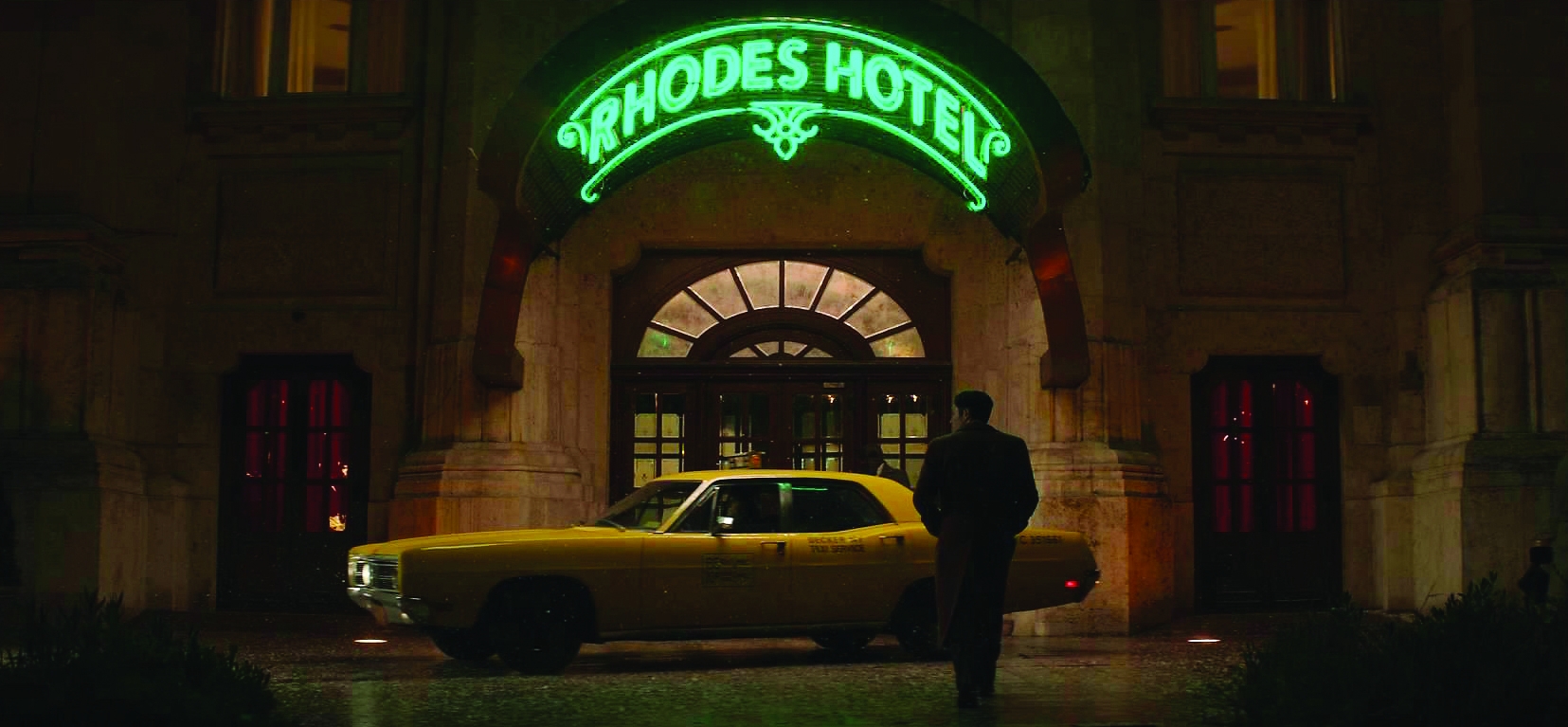
Three Nights at The Continental
Cinematographers Peter Deming, ASC and Pål Ulvik Rokseth, and director Albert Hughes, share how they explored the origins of the John Wick films’ infamous assassins’ hotel.
The three-part miniseries The Continental: From the World of John Wick turns the action-film franchise’s clock back to the 1970s, and the production demanded an appropriately gritty aesthetic to match its period setting. To help him create this look, director-executive producer Albert Hughes enlisted two cinematographers — Norwegian up-and-comer Pål Ulvik Rokseth (who shot the episodes “Brothers in Arms - Night 1” and “Loyalty to the Master - Night 2”) and longtime collaborator Peter Deming, ASC (“Theater of Pain - Night 3”) — for the Budapest-based Peacock production.
Deming offers, “Ours is a dark and sinister world, characterized by deep shadows and silhouettes.”
Stability and Sensibility
Hughes had worked with Deming on From Hell (AC Oct. ’01), The Good Lord Bird and portions of Alpha, and thought of him immediately for The Continental. “Peter brings stability — he’s seen it all, done it all,” Hughes says. “My nickname for him is ‘Pete Eastwood’ because on the set, he’s unflappable and stoic. We don’t even need to talk; we just get there. Sometimes he’ll have an idea for a shot, and I’ll ask, ‘Peter, is it gonna be dope?’ and he goes, ‘Yeah, it’s gonna be dope.’ And that’s it.”
When a previous obligation kept Deming from committing to the entire shoot, however, Hughes remembered some impressive work he’d seen in the Main Competition at EnergaCamerimage in 2019: Espen Sandberg’s Amundsen, shot by Rokseth.

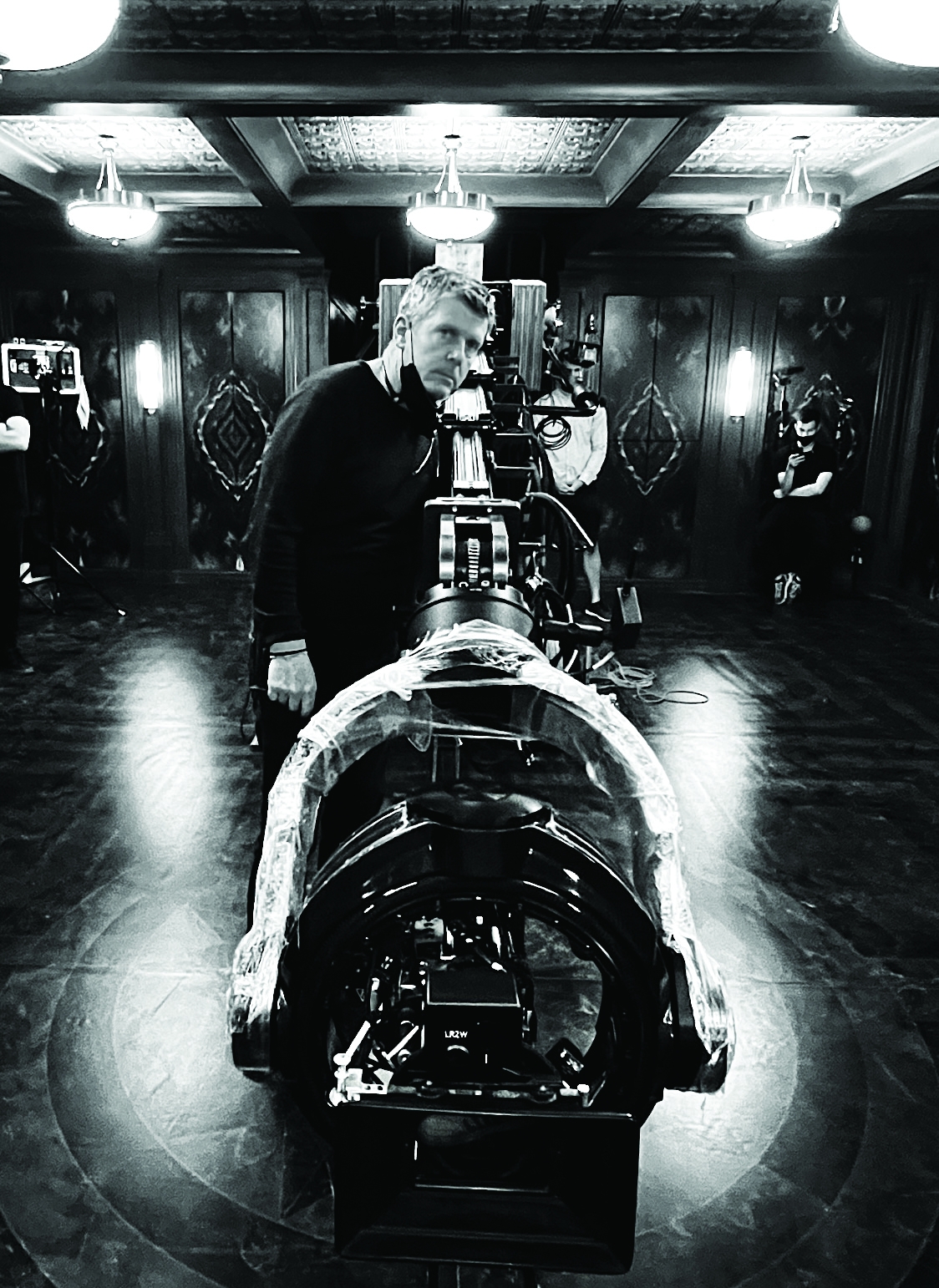
Hughes appreciated Rokseth’s fresh perspective on the craft: “Pål sees things differently because he’s so young compared to me. And his sensibilities are completely different from Peter’s. He’s a butterfly — a creative, artistic kind of guy.”
Rokseth, whose feature credits include 22 July and the upcoming Handling the Undead, recognized that there was much to learn from Hughes’ detail-oriented approach to filmmaking, wherein shots are meticulously designed and a style guide is strictly followed.
“Albert’s almost like a cinematographer himself, though he claims to not understand lighting, which I’m not sure is actually true,” Rokseth notes wryly.
Illuminating the Past

With a past shrouded in mystery and a conspicuous address in Lower Manhattan, the Continental Hotel plays a key role in the John Wick franchise, serving as a sanctuary, an underworld bank and an armory, as well as Wick’s East Coast base of operations. Focusing on the hotel’s early days, the show dispels some of the mystery, following two estranged brothers — Frankie and Winston Scott (Ben Robson and Colin Woodell) — who are reunited after Frankie steals a priceless object from the Continental's manager, Cormac (Mel Gibson), who enlists Winston to track him down.
Hughes wanted to maintain the high production value for which the franchise is known, but ground the visuals in a period-appropriate aesthetic — “something that could evolve over time into the modern, crystal-clear style we’re familiar with,” Rokseth says.
Deming notes that lighting choices went a long way toward distinguishing the series from the features: “The films openly embrace flashy, high-tech lighting, and while we did use some LEDs, like Astera tubes and Arri SkyPanel S60s, we consciously avoided letting them appear on¬screen. Instead, tungsten-filament practicals played a significant role in shaping the look of the show.”
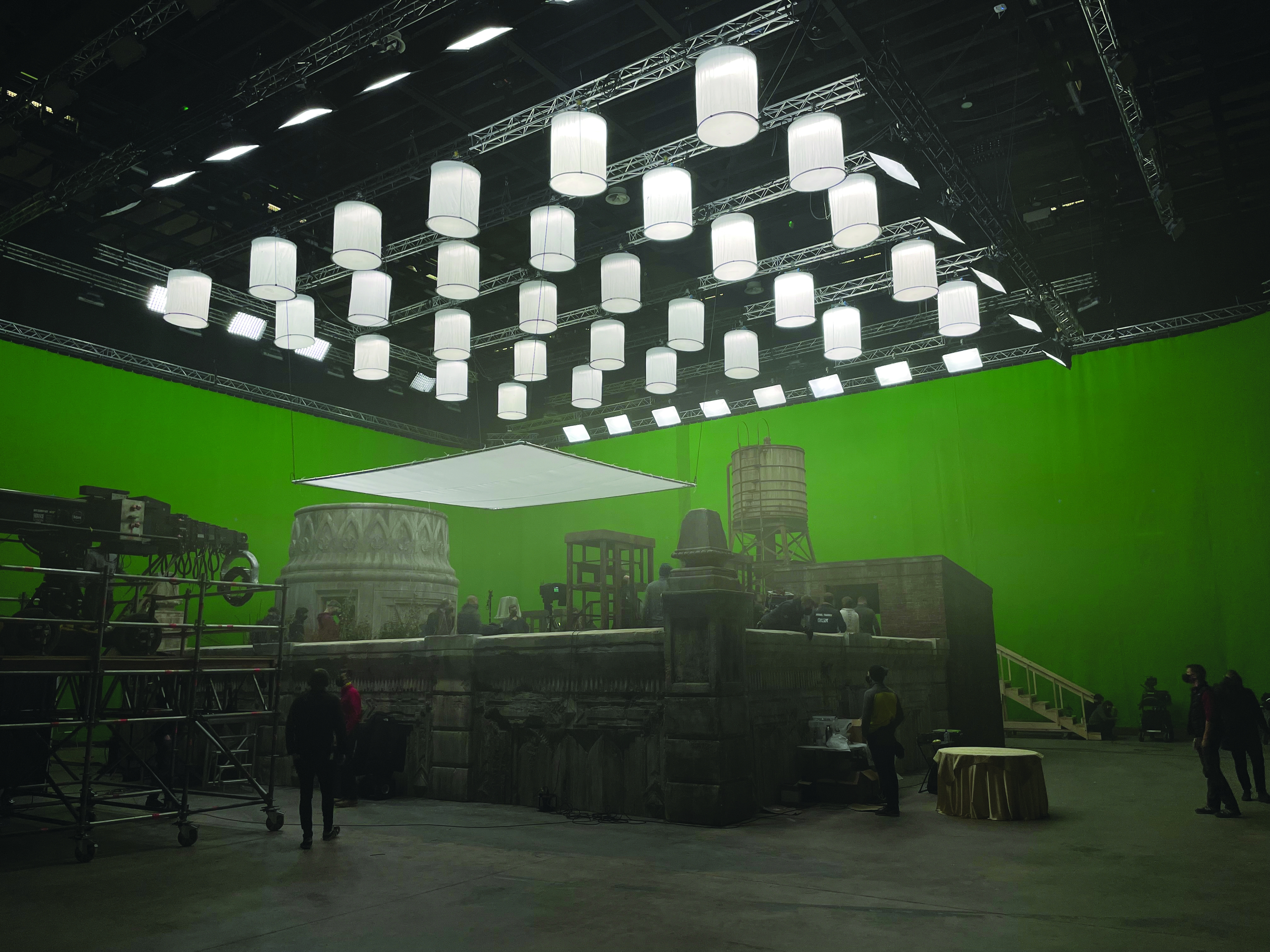
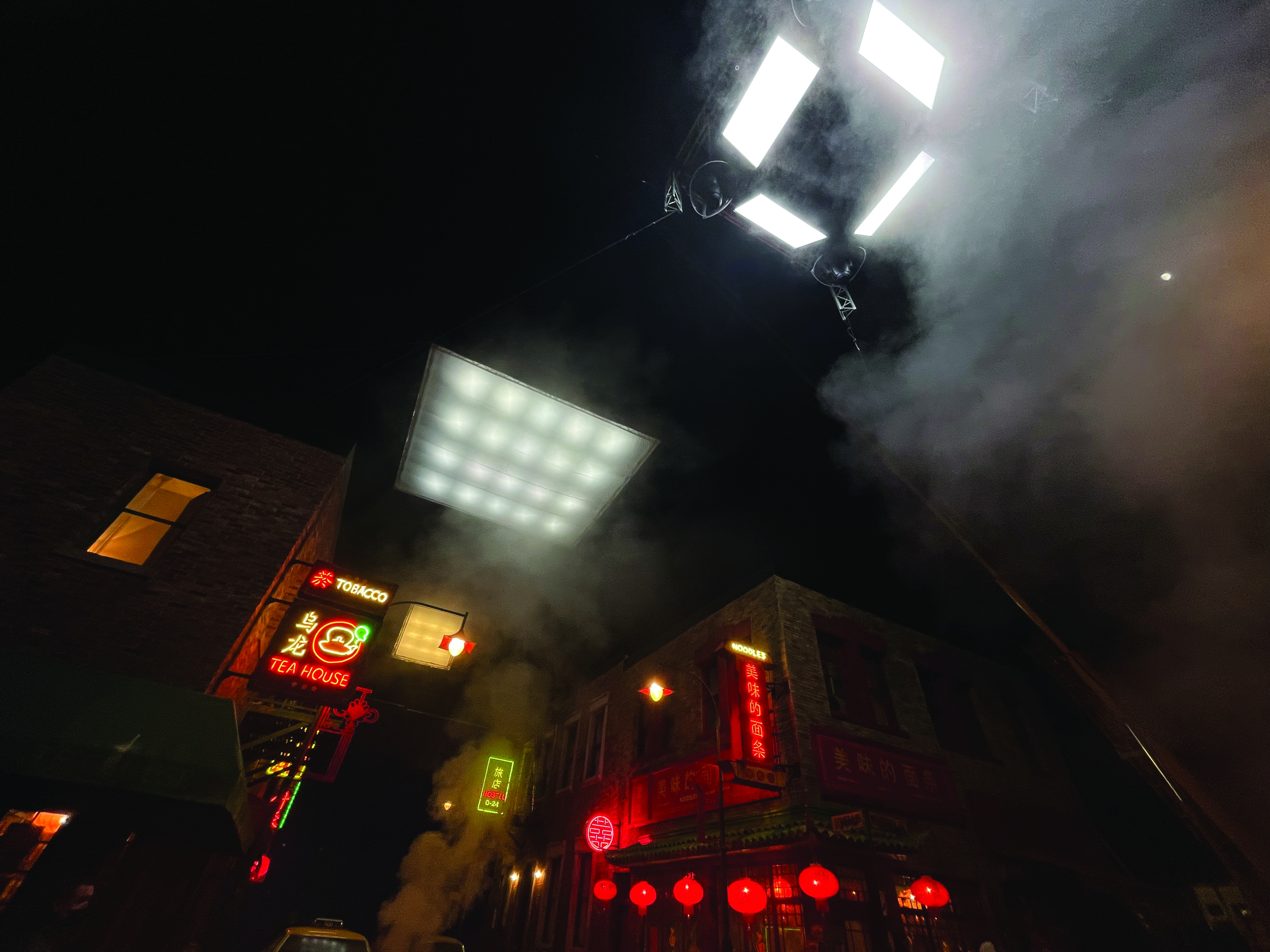
Stunt Visualization
Stunt choreography was likewise adapted for the period. The 87eleven Action Design team (founded by John Wick 1-4 director Chad Stahelski and producer David Leitch) created fights that feel like street brawls from an old kung-fu movie and showcase the inventiveness and humor characteristic of the John Wick films. Standalone action sequences, ranging from sprawling, multi-level shootouts to close-quarters combat, were executed by an action unit with its own trio of cinematographers: Andreas Johannessen, FNF (“Night One”); Aril Wretblad, FSF (“Night Two”); and Paul Sanchez (“Night Three”).
To shoot the stuntvis for “Night Three,” Deming recalls, “First unit would establish the look, then Paul Sanchez and I would discuss the style of the scene. The stunt team would choreograph it, shoot a very comprehensive video version and cut it together. The stuntvis was so well realized that we could shoot all the lead-in to the action and then the end of the scene without worrying about continuity at all.”
Period Haze
Guided by production designer Drew Boughton and supervising art director Zsuzsa Kismarty-Lechner, the production bashed together a squalid 1970s New York using interior and exterior sets left over from previous productions — including The Alienist — or built from the ground up on location and on stages around Hungary, then enhanced these with digital backgrounds. Additional photography was done on the New York Street at Paramount Studios in Los Angeles.
Rokseth recalls that textures and colors for The Continental were pulled from hazy photographs of New York City in the 1960s and early ’70s, when air pollution was so severe that the skies snowed ash and rained acid.
Big Rigs
In preproduction, Boughton produced scale models of the Continental's exterior — to be constructed at Origo Studios in Budapest — to aid Rokseth and Episode 1 gaffer Levi Gawrock Trøite with their lighting plans. (Balázs Vákár gaffed Episodes 2 and 3.) Rokseth centered his approach on the cool, diffuse quality of natural Scandinavian light, describing it as “soft light that enters through the windows and quickly falls off into darkness, with almost no fill in between. Growing up with soft, natural light around me, the ‘Scandinavian’ character of light has become a part of my identity — and, of course, I was also deeply inspired by another Scandinavian, Sven Nykvist, ASC, FSF. For us, using bigger, softer sources helped separate the modern [world] of the John Wick films from The Continental, set in the ’70s.”
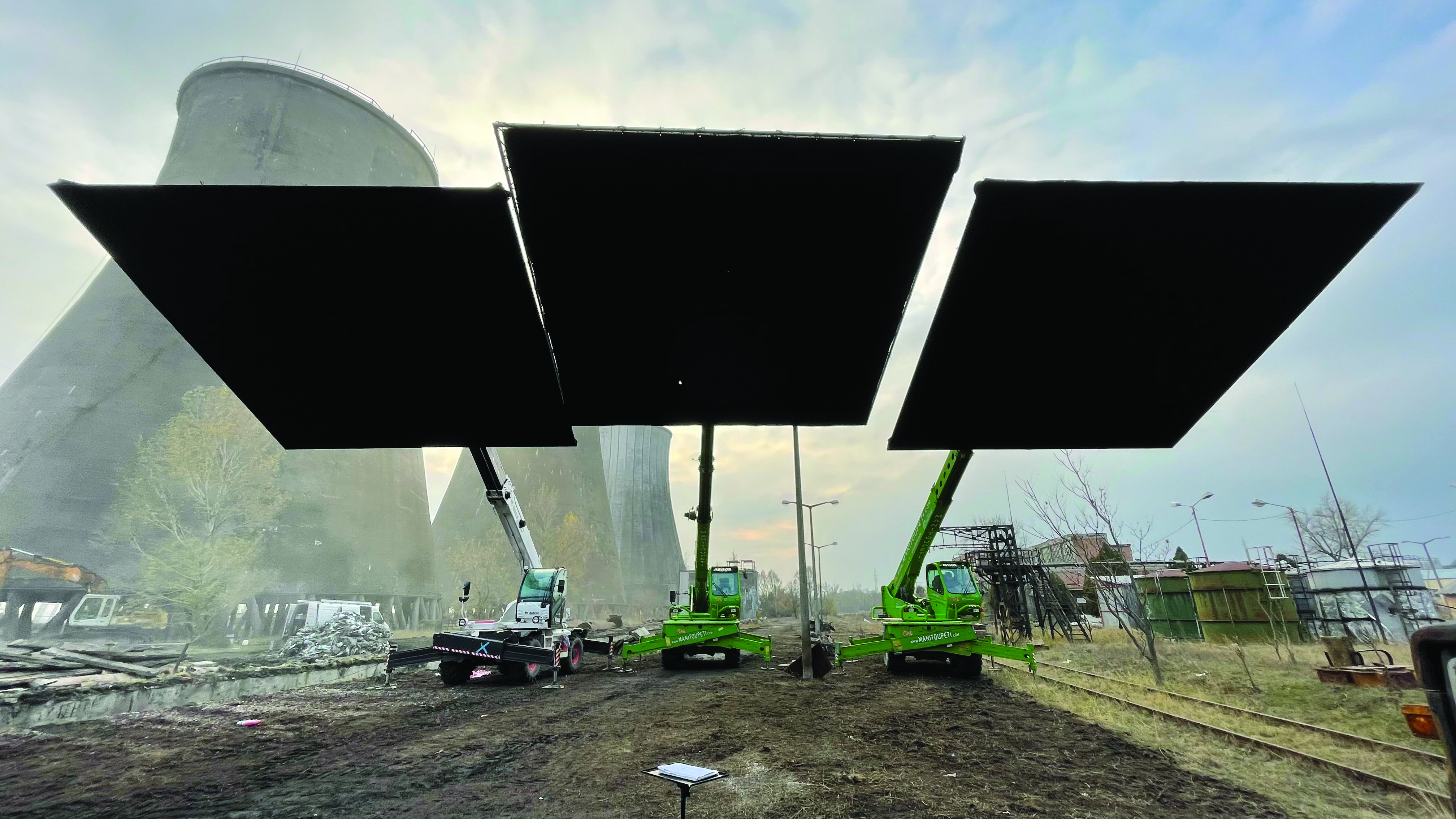
For daylight interiors, this was accomplished with 12K Fresnel and 18K HMIs, bouncing off 8'x8' or 12'x12' white duvetyn “eyebrows,” which were rigged outside windows — augmented in close-ups with 4'x4' white floppy booklights reflecting Arri SkyPanel S30-Cs or S60-Cs on turtle stands. “In front of the booklights, I used various Grid Cloths, depending on the day and scene, but mostly Full Grid,” says Rokseth. When structural restrictions limited the use of overhead lighting — as was the case at Budapest’s Stern Studios, home to the Continental’s rooftop set — four 20'x20' bi-color balloon lights were used.
For exteriors filmed outdoors, large, overhead sources were hung from construction cranes: as many as 25 Arri SkyPanel S60-Cs in 20'x40', 20'x60' and 30'x60' diffused soft boxes outside the Continental set; a diamond-shaped rig with four S360-Cs and four Robe BFML Blade moving heads on the Chinatown set at Origo; and a pair of Manitou cranes with nine Arri SkyPanel S60-Cs in 12'x12' soft boxes could be tilted and easily repositioned — while also serving as sun covers and rear kick¬ers — throughout the shoot. “The BFMLs,” Rokseth notes, “were used to spot and kick background action, such as cars, walls and facades, [and to] create pools of light [motivated by] practicals on the set. We also used them to backlight haze in the background.
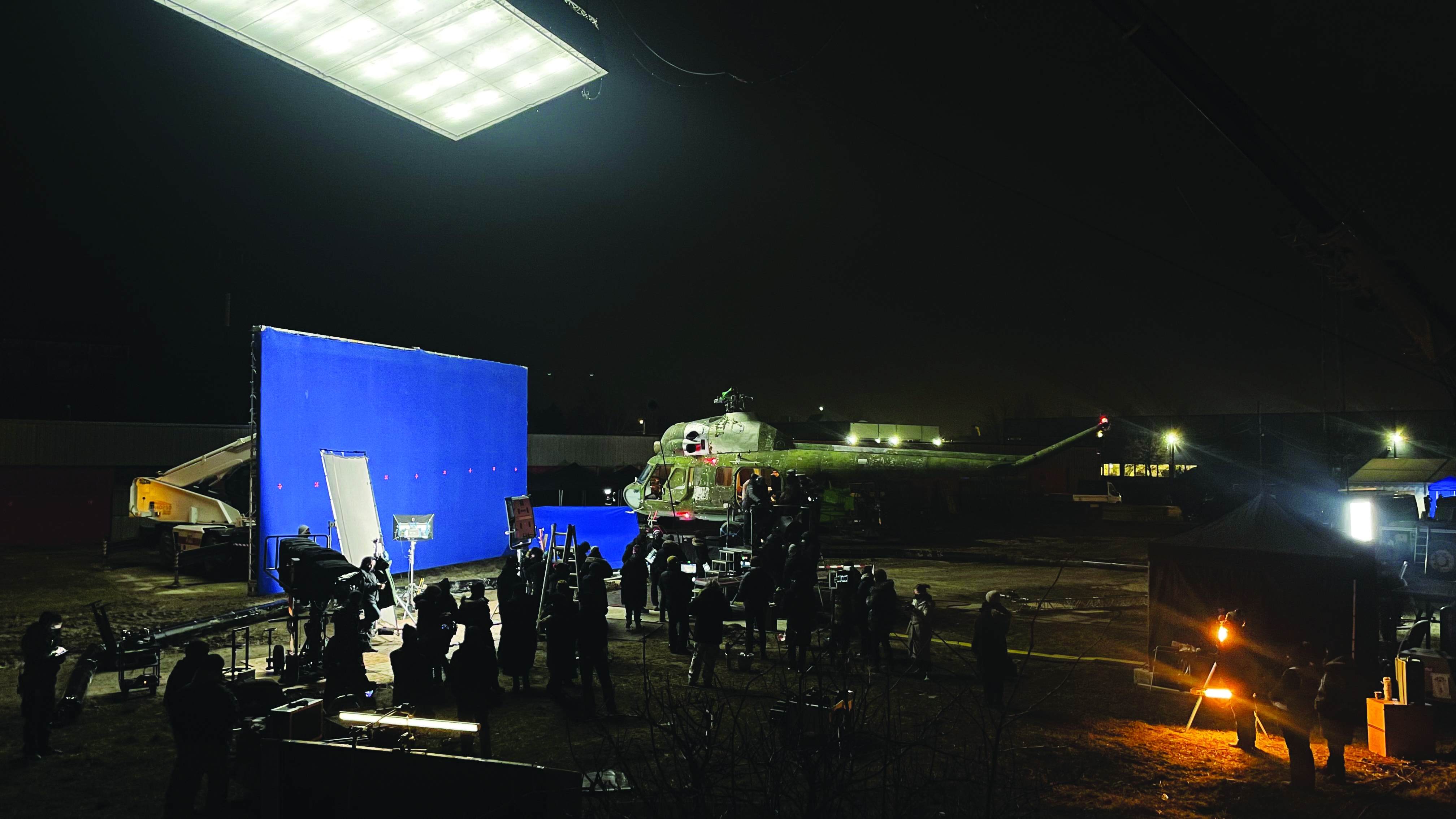
“I’d never worked with so many big rigs before, and I was afraid of not working fast enough because we had so much to do,” Rokseth admits.
A significant amount of shot design required the camera to move about the set and see in every direction. “To do that efficiently, we put everything on a wireless DMX system,” says Rokseth. “Our console programmer, László Szentmihályi, set up a universe with actors’ key lights and big, soft sources on temperature and level faders.” The cinematographer performed these lighting cues manually — “like a DJ” — with a Cameo Control 6 linked to the main board.
Panavision Glass
Rokseth opted to capture The Continental mainly with Arri’s Alexa Mini LF in Open Gate mode. He notes that the camera accommodated his preference for a 4K image, and “provided me with a unique opportunity to achieve focus separation, particularly with wide lenses. Additionally, I aimed to have the flexibility to zoom in during postproduction for stabilization purposes — a request from Albert. The endeavor also held the fascinating prospect of pairing lenses from the 1960s ‘golden era’ with a contemporary sensor.” In prep, he and A-camera 1st AC Sindri Týr Högnason tested three series of Panavision anamorphic primes — B, G and T — as well as Panaspeed spherical lenses. The filmmakers opted to use the B Series as their main lenses.
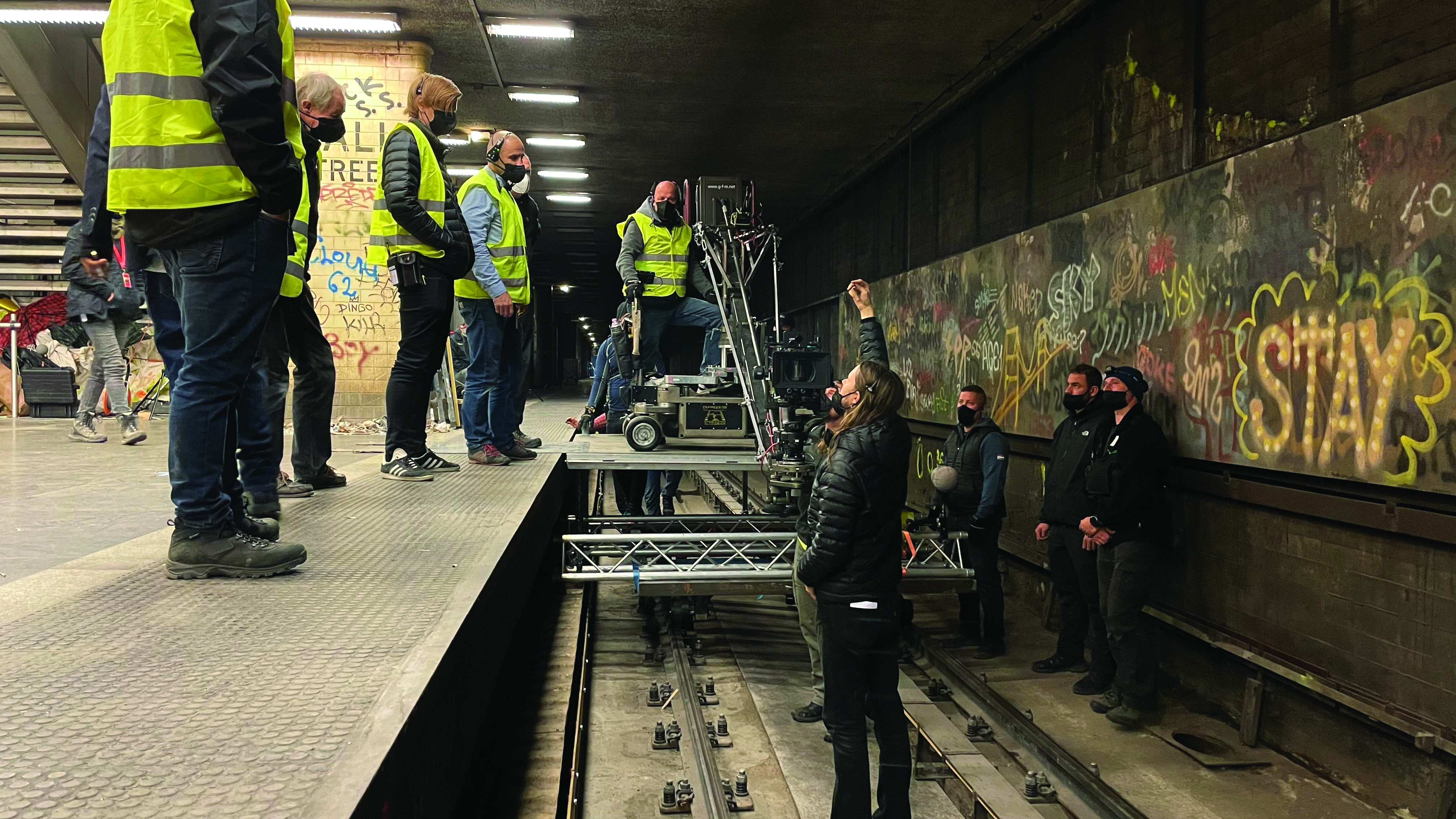
“Peter used the B Series to shoot The Good Lord Bird, and Albert liked how they softened the digital image,” says Rokseth. “Faced with a con¬siderable amount of action and car work, I was uncertain about whether to use a diopter, for instance. During prep, we consulted with [ASC associate member] Dan Sasaki [of Panavision], who suggested utilizing the T Series [when a shot called for close focus], because these lenses can be tuned to mimic the look of the B Series while offering more mechanical versatility.”
The T Series lenses allowed Rokseth to achieve these closer-focus shots at stops between T2.8 and T4 and offered a higher level of control over lens flares. “By contrast, the B Series didn’t offer the kind of streak flare that is characteristic of the John Wick films,” he notes. “They tend to create more of a blooming effect when shot wide open, causing light to leak into the lens in an uncontrolled manner.”
Rokseth also notes that the production made some use of the G Series, and when certain scenes called for high-speed work, the filmmakers turned to the Alexa LF.
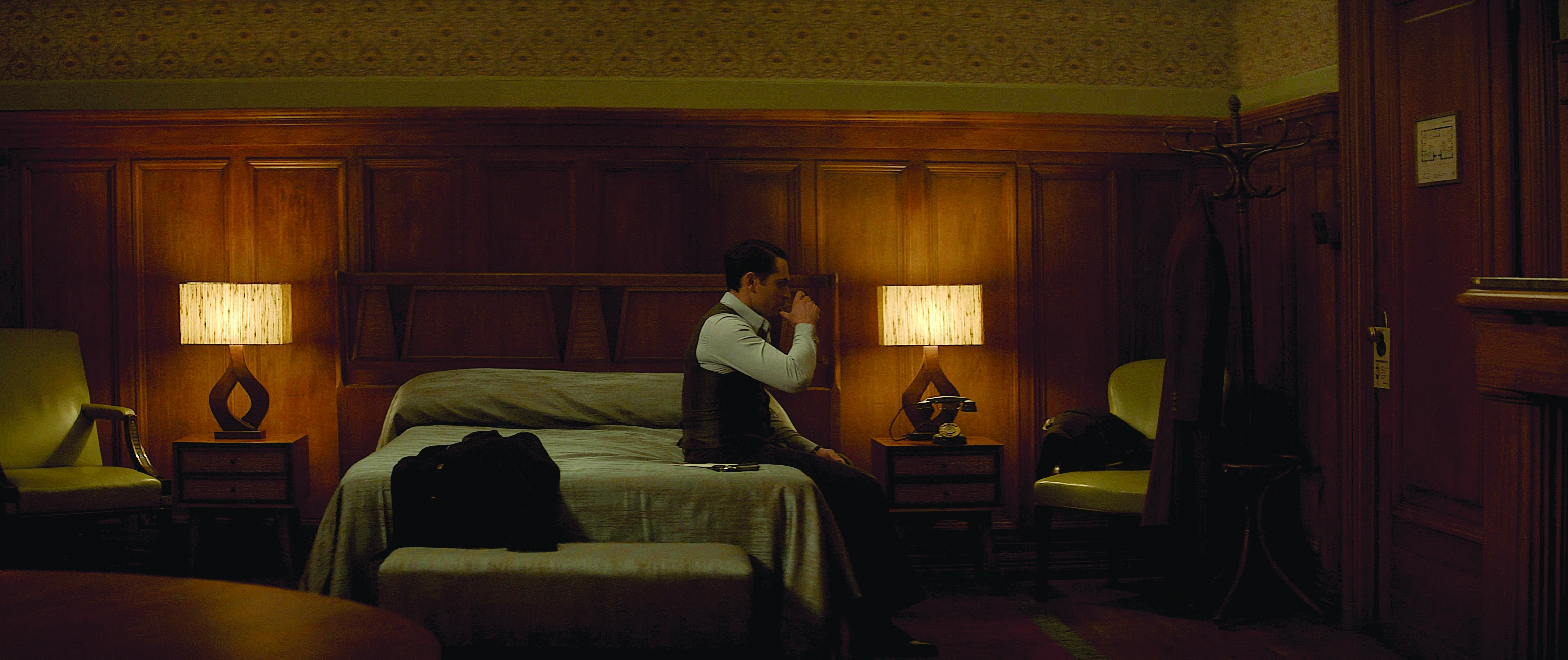
Favoring Full Spectrum
Hughes directed “Night One,” and then Charlotte Brändström directed “Night Two” while he and Deming prepped “Night Three.”
“Albert wanted to push Episode 3 to be more extreme, more crazy,” says Rokseth. “But the handoff was more of a casual conversation with Peter since he’s so professional and has so much experience.”
“Some of the light was predetermined, more of a genre construct rather than specific to the show,” says Deming. “Pål did great work in contrasting cool and warm hues, using color to support the drama when appropriate. Some scenes needed a realistic look, so we didn’t completely stylize them.
“I prefer to light people with tungsten whenever possible,” Deming continues. “There’s something about the limited and precise spectrum of LEDs that’s not as pleasing on faces, whereas tungsten light has a more organic feel, with a full-spectrum falloff that’s just more appealing on skin tones. The exception to this would be Astera’s Titan Tubes, which blend with tungsten really well. We used them a lot on The Continental — along with traditional tools like paper lanterns — because we were often in tight spots and had to hide units. I mostly used LEDs for background lighting, occasionally adding 20Ks.”
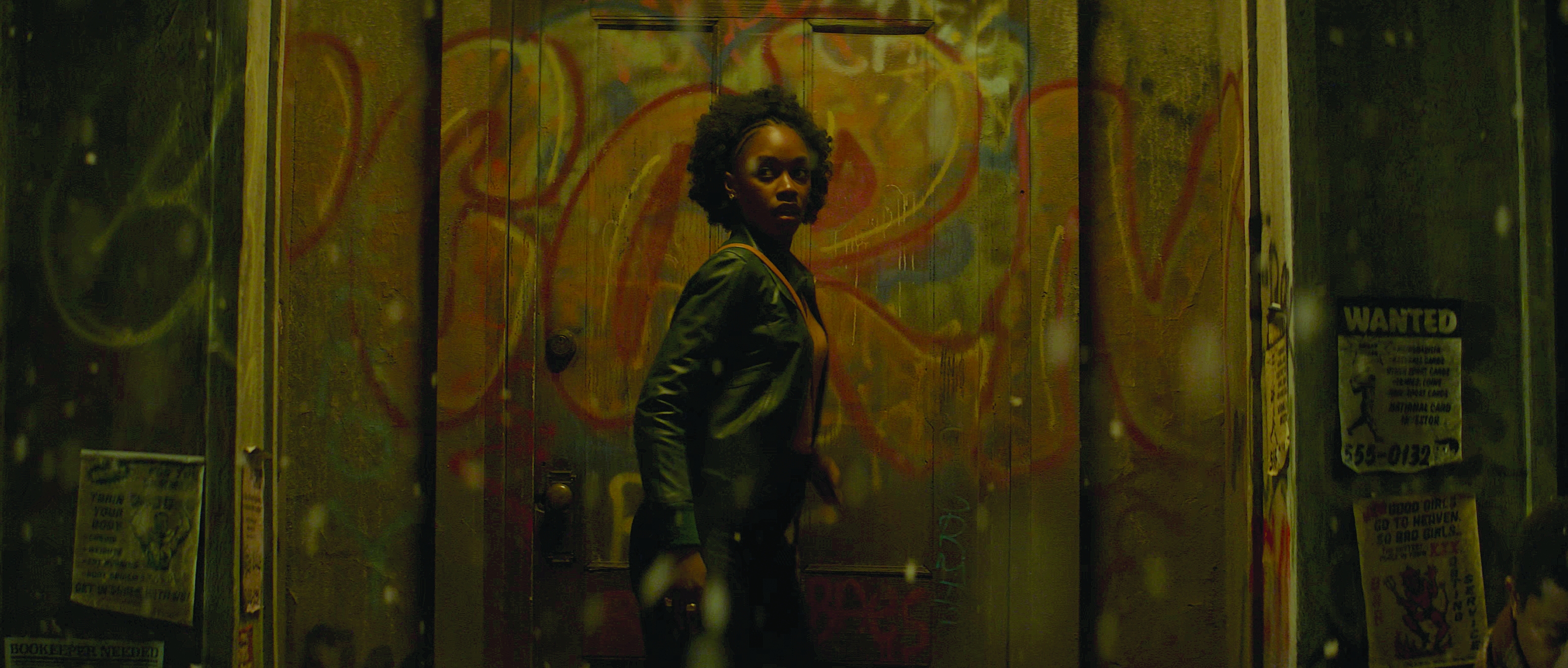
Finishing Touches
Blending the work of two cinematographers — or five, counting 2nd unit — fell to senior colorist and ASC associate member Maxine Gervais at Picture Shop in Hollywood. The Continental marks her third collaboration with Hughes, after The Book of Eli and Alpha.
“Maxine is my partner in visual storytelling,” Hughes says. “It’s not a traditional relationship where the cinematographer is in [the final grade] every day and I come in for a day or two. No, I’m in the whole time. But she’s my right hand, and I won’t do a film without her.”
Gervais begins her grading process with Hughes by brainstorming and looking at art references, then confers with the cinematographer to understand their vision before making her first pass in Baselight. Notes are given and applied before Hughes joins her for the finishing work.

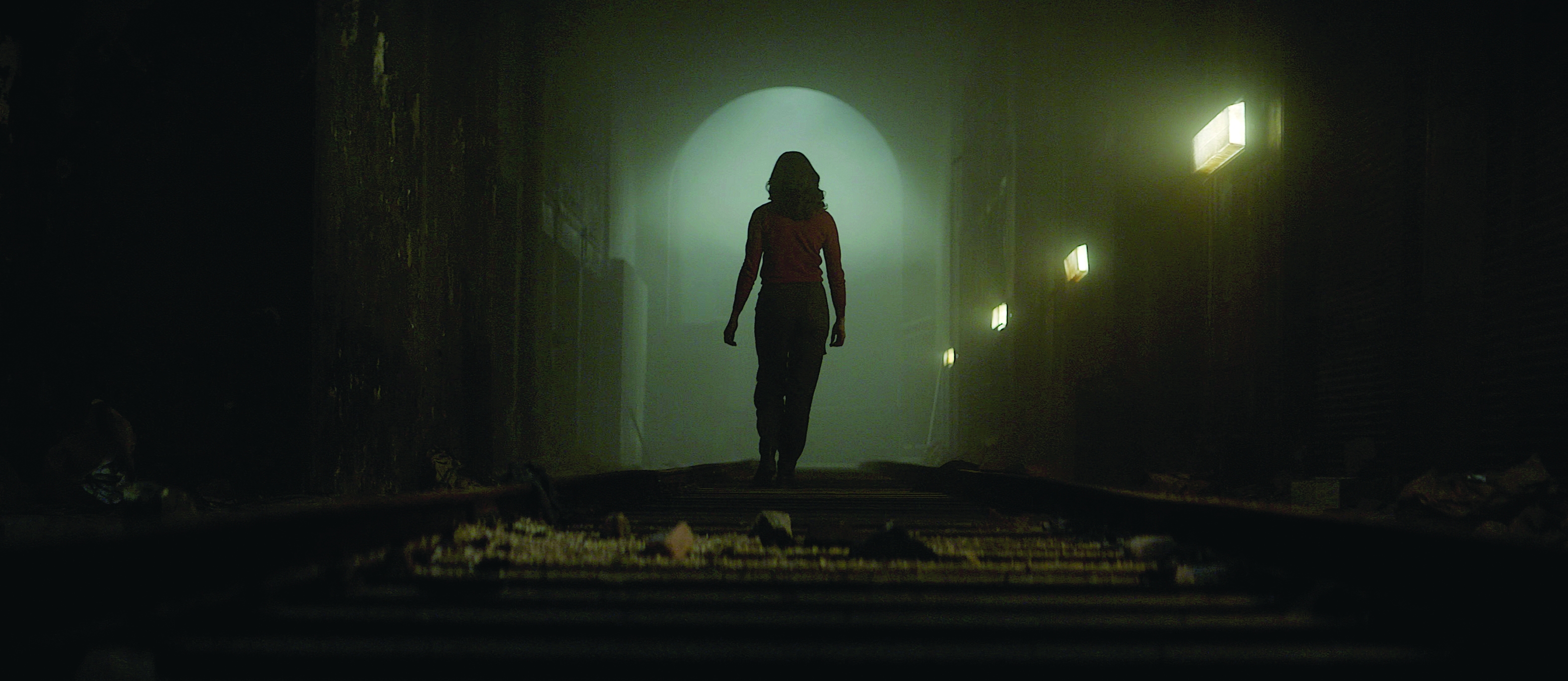
“What was fun about The Continental was the ’70s feel — good blacks but not overly crushed, good contrast and a good color palette,” says Gervais.
A single film-print-emulation LUT was developed with input from Rokseth and carried across the whole series. Special LUTs were created for black-and-white flashbacks and for subjective shots that align viewers with the POV of a still camera — with an aim to add grit and texture.
“When I was in film school, we were taught you shouldn’t notice the cinematography if a story is good,” Hughes reflects. “But look at early cinema — it’s purely visual! A picture tells a thousand words, you know? Cinematography is what makes the audience feel whether they are in good hands. It’s something that absolutely should be noticed.”
Following the publication of this article, Deming and Rokseth were joined by interviewer Blake McClure, ASC to discuss their work in the show for this episode of ASC Clubhouse Conversations:
Tech Specs
2.40:1
Cameras | Arri Alexa Mini LF, Alexa LF (for high speed)
Lenses | Panavision B, T, G Series; Panaspeed Spherical Lenses (primarily for action unit)






